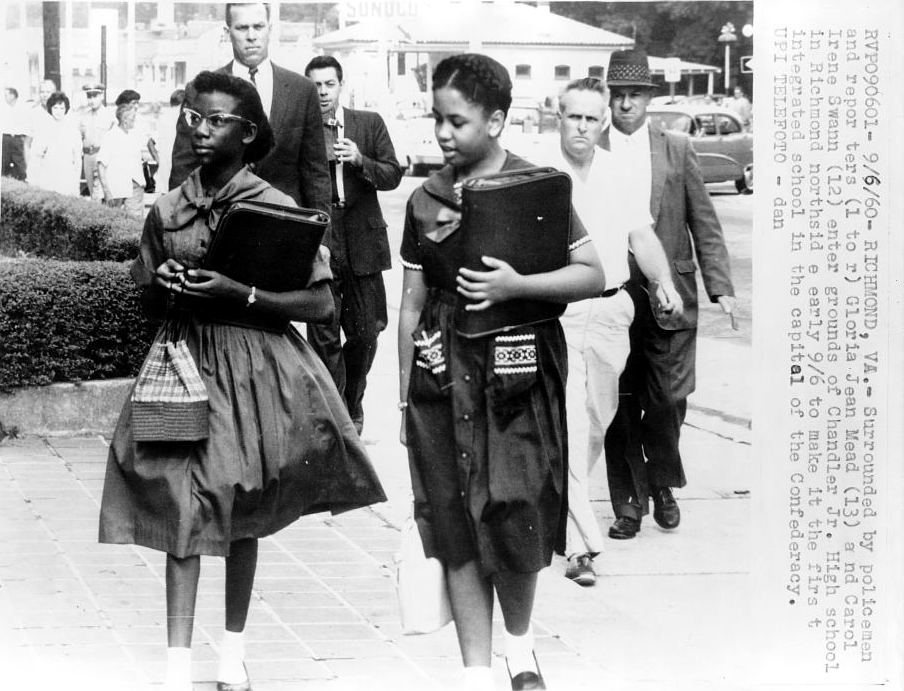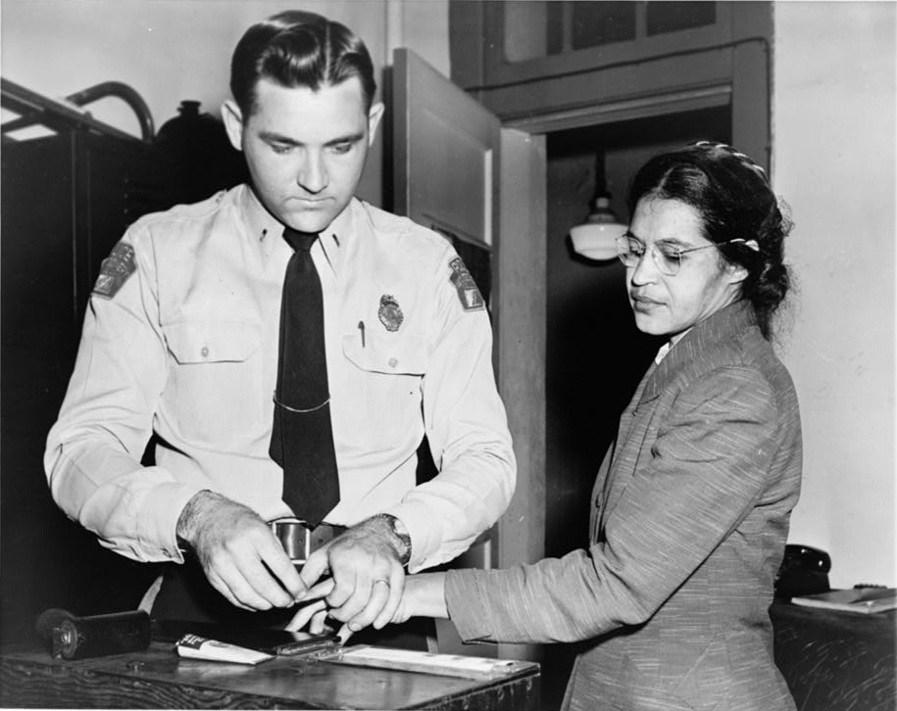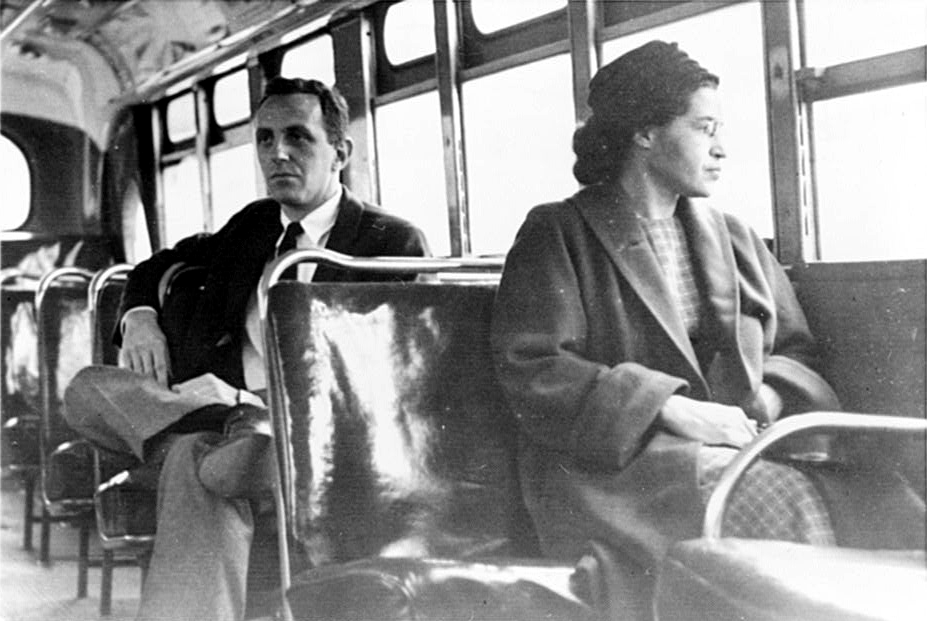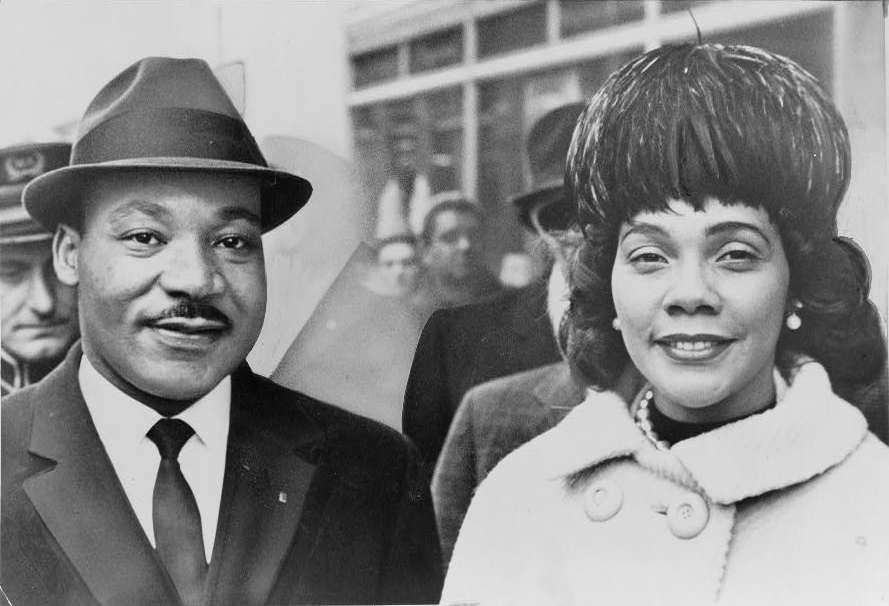|
1954: The Supreme
Court declared school
segregation illegal
 The first big victory of the modern Civil Rights Movement was the court case known as Brown v. Board of Education. In that 1954 case, the U.S. Supreme Court ruled that racial segregation of public schools treated citizens unequally, and was therefore unconstitutional. The court ordered school districts nationwide to make plans to stop segregation of public schools as soon as possible. The order was met with anger, delays, and resistance from many whites. By the late 1950s and early 1960s, however, plans to bring whites and blacks together in the same schools were going forward. The photo below shows African American students who were the first to attend a formerly all white school in Richmond, Virginia, in 1960. |

|
1955:
Rosa
Parks keeps her seat on the bus
The event that really energized the modern Civil Rights Movement came in 1955 in the city of Montgomery, Alabama. Rosa Parks, a black woman active in local civil rights organizations, refused to move to the back of a city bus as a segregation law there required. Parks was arrested and charged with violating the bus segregation law. The photo below shows her being fingerprinted at the local police station. |

|
A bus
boycott, then a victory in court
Black leaders in Montgomery organized a year-long boycott of the city buses by African Americans. That means blacks all over the city refused to ride on the bus system until segregation was ended. The boycott ended in 1956 when a federal court in Alabama ruled that segregation of public buses treated citizens unequally, and was therefore unconstitutional. The photo below shows Rosa Parks riding a bus again in 1956, and sitting wherever she wanted. |

|
Reverend
Martin Luther King, Jr., became a leader
Rev. Martin Luther King, Jr., became famous nationwide because of his role as one of the leaders in the Montgomery bus boycott. He was the pastor of a church in the city when the boycott started. He often quoted the teachings of Christianity in the Bible to explain why racial segregation was wrong, and also why protests against segregation had to remain strictly non-violent. Both of these approaches, he knew, would appeal to blacks and also help win the support of more whites. Rev. King is shown in the photo below with his wife, Coretta Scott King. |

The historical photos are from the Library of Congress.
The color photo of the Supreme Court is by David Burns.
Some images have been edited or resized for this page.
|
Copyright Notice
Copyright 2010, 2017 by David Burns. All rights reserved. As a guide to the Virginia Standards of Learning, some pages necessarily include phrases or sentences from that document, which is available online from the Virginia Department of Education. The author's copyright extends to the original text and graphics, unique design and layout, and related material. |